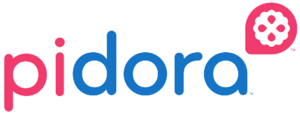
Pidora is a Linux software distribution for the Raspberry Pi computer. It contains software packages from the Fedora Project (specifically, the Fedora ARM secondary architecture project) compiled specifically for the ARMv6 architecture used on the Raspberry Pi, packages which have been specifically written for or modified for the Raspberry Pi, and software provided by the Raspberry Pi Foundation for device access.
Pidora Releases
Currently available:
Previous Raspberry Pi Fedora Remix releases (not optimized for the ARMv6 architecture):
Obtaining and Installing Pidora
Refer to Pidora Installation for instructions on preparing an SD card containing the Pidora software.
Setting Up the Raspberry Pi for First Time Use
This is the recommended system configuration for first time startup:
- Connect the Raspberry Pi to a high-definition monitor or TV using the HDMI output (HDMI and DVI-D are basically the same signals, so an HDMI-DVI adapter can be used).
- Connect a USB keyboard (and, optionally, a USB mouse).
- Plug in an ethernet cable connected to an IPv4 network with a DHCP server and Internet gateway. The Remix will use this connection to set the system clock.
- Insert the SD card.
- Apply power.
First Boot
Pidora provides a graphical configuration tool used to adjust basic settings the first time Pidora is started. See the Pidora 18 Firstboot for more information.
Headless Operation
One should be able to plug the Raspberry Pi into the network without a display and have it provide the IP address information back to the end user Pidora Headless Mode
System Administration: Managing the Raspberry Pi Fedora Remix
The Raspberry Pi Fedora Remix is administered using standard Linux system administration procedures. For specific tips, see:
- Raspberry Pi Fedora Remix Administration
- (Add resources here!)
Suggested Packages
For suggestions on packages to meet particular needs and which run well on the Raspberry Pi, see Raspberry Pi Fedora Remix 14 - Suggested Packages.
Helping with the Remix
The Remix is based on Fedora ARM. If you're interested in improving the Remix, please consider participating in the Fedora project. The Fedora community is very welcoming, and there are instructions on the Fedora web site on how to join and participate in Fedora, whether as a software developer and packager, translator, documentation writer, artist, designer, ambassador, or teacher.
The Remix was produced at the Seneca Centre for Development of Open Technology, which hosts the Fedora ARM build system.
To learn why this is a Remix and not a direct Fedora release, please see the FAQ.
Getting Help
There are many sources of help available:
- The Raspberry Pi Community
- Web site and forums: http://raspberrypi.org
- Wiki: http://elinux.org/RaspberryPiBoard
- IRC: irc://irc.freenode.net/raspberrypi
- The Fedora Community
- Web site: http://fedoraproject.org
- Wiki: http://fedoraproject.org/wiki
- Mailing lists:
- General discussion: https://admin.fedoraproject.org/mailman/listinfo/users
- Fedora-ARM: https://lists.fedoraproject.org/mailman/listinfo/arm
- Developers and packagers: https://admin.fedoraproject.org/mailman/listinfo/devel
- IRC: irc://irc.freenode.net/fedora - irc://irc.freenode.net/fedora-arm
- Seneca Centre for Development of Open Technology
- Web site and wiki (this wiki!): http://cdot.senecac.on.ca
- IRC: irc://irc.freenode.net/seneca
Reporting Bugs and Suggesting Enhancements
Your help in identifying bugs and suggesting enhancements is very important! Please file your bug report/enhancement request:
- for bugs related to Fedora packages: on the Fedora bugzilla system at http://bugzilla.redhat.com
- for bugs related to Raspberry Pi-specific packages, the installer, or the Remix: on the FedoraHosted ARM Trac system at Pidora_18_Bug_Tracking
Frequently Asked Questions (FAQ)
Please refer to the Pidora FAQ.